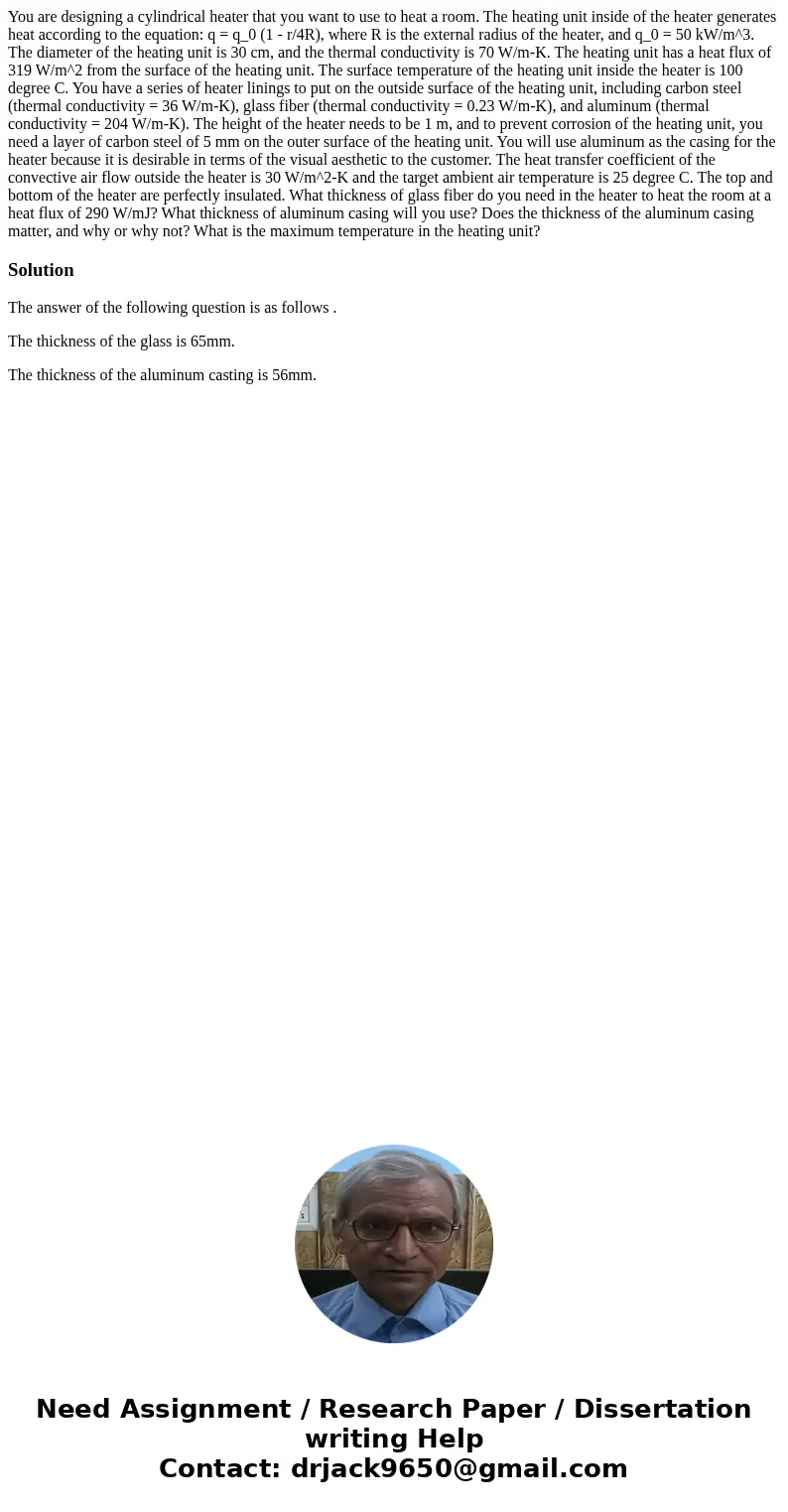You are designing a cylindrical heater that you want to use
You are designing a cylindrical heater that you want to use to heat a room. The heating unit inside of the heater generates heat according to the equation: q = q_0 (1 - r/4R), where R is the external radius of the heater, and q_0 = 50 kW/m^3. The diameter of the heating unit is 30 cm, and the thermal conductivity is 70 W/m-K. The heating unit has a heat flux of 319 W/m^2 from the surface of the heating unit. The surface temperature of the heating unit inside the heater is 100 degree C. You have a series of heater linings to put on the outside surface of the heating unit, including carbon steel (thermal conductivity = 36 W/m-K), glass fiber (thermal conductivity = 0.23 W/m-K), and aluminum (thermal conductivity = 204 W/m-K). The height of the heater needs to be 1 m, and to prevent corrosion of the heating unit, you need a layer of carbon steel of 5 mm on the outer surface of the heating unit. You will use aluminum as the casing for the heater because it is desirable in terms of the visual aesthetic to the customer. The heat transfer coefficient of the convective air flow outside the heater is 30 W/m^2-K and the target ambient air temperature is 25 degree C. The top and bottom of the heater are perfectly insulated. What thickness of glass fiber do you need in the heater to heat the room at a heat flux of 290 W/mJ? What thickness of aluminum casing will you use? Does the thickness of the aluminum casing matter, and why or why not? What is the maximum temperature in the heating unit?
Solution
The answer of the following question is as follows .
The thickness of the glass is 65mm.
The thickness of the aluminum casting is 56mm.

 Homework Sourse
Homework Sourse